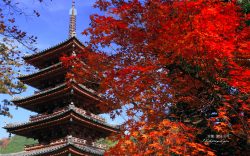Haiku is the shortest verse form in the world,consisting of 17 syllables in a 5-7-5 pattern.
The original form of haiku was created during the Muromachi period,and present style developed in the Edo period.
Though it is short and there are some rules to its writing,it uses carefully chosen words to express human emotions and describe nature.The themes of Haiku may be inspired by intuitive penetration into nature and life.
Haiku may be easy to learn,but it is difficult to master.To some people it could be a kid’s game,but to others it is a lifetime discipline.
Each haiku must have a seasonal word called kigo which helps to suggets nature in people’s imaginations.Examples of kigo are the use of cherry blossoms to indicate spring; cicadas,summer; chrysanthemums,autumn; and snow,winter.
Kigo are also called kidai and essential in renga,another traditional Japanese verse form.
One of the most famous poets,Matsuo Baho(1644-94),once said,”If you want to learn about the pine,go to the pine.If you want to learn about the bamboo,go to the bamboo. When you and the object have become one,your poetry issues of its own accord.”
Basho was said to be one of the greatest observers of things and discoverers of their truths.
Haiku remains popular in modern Japan,and in recent years its popularity has spread to other countries.
Now many haiku are translated into foreign languages and taught in schools overseas

